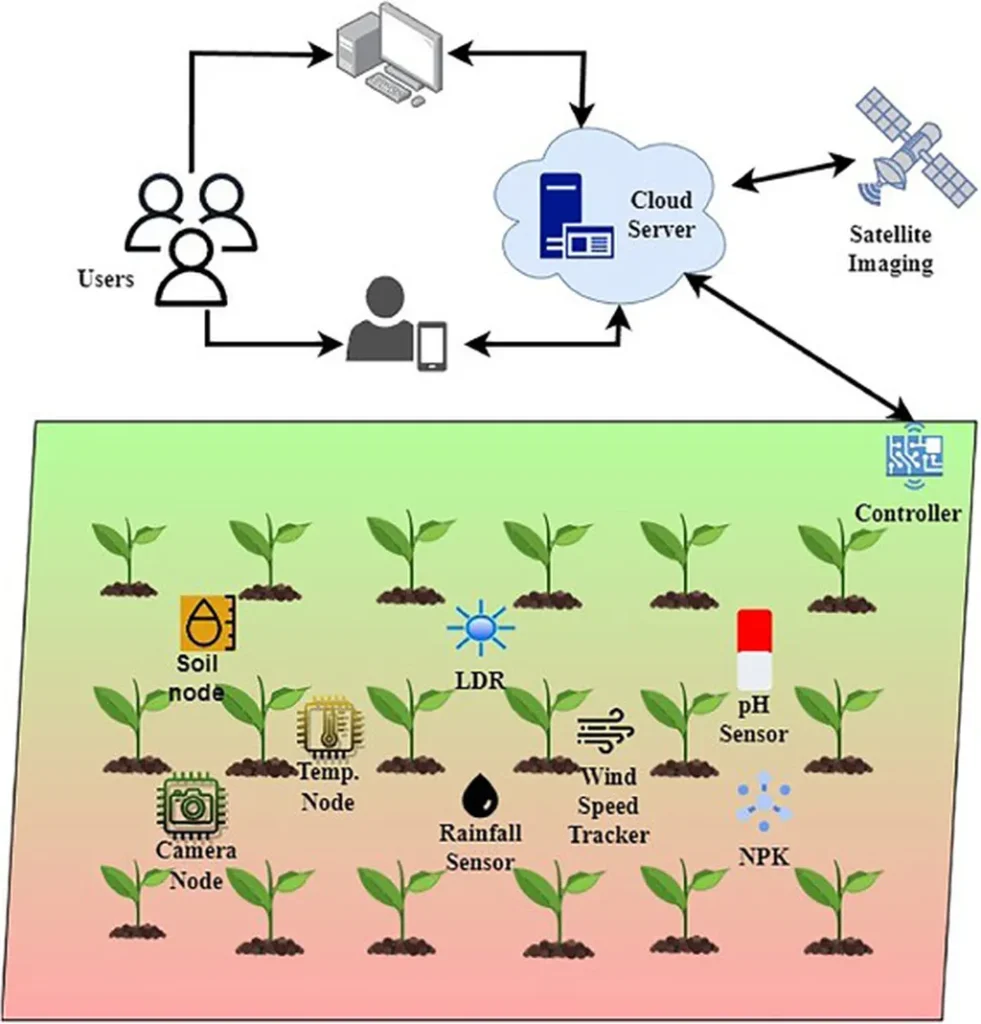In the heart of China’s Jiangsu University, a team of researchers led by Pengpeng Yu from the School of Agricultural Engineering is redefining the future of smart agriculture. Their recent work, published in the journal *Frontiers in Plant Science* (which translates to *Plant Science Frontiers* in English), explores the transformative potential of cloud–edge–device collaborative computing in agriculture. This innovative approach is poised to revolutionize how we monitor, manage, and optimize agricultural practices, with significant implications for the energy sector.
Traditional agricultural systems often rely on centralized cloud computing, which can lead to delays in data processing and decision-making. Yu and his team argue that a collaborative model integrating cloud, edge, and device-level computing can address these limitations. “This paradigm enables distributed intelligence, real-time processing, and adaptive decision-making,” Yu explains. “It’s a game-changer for smart agriculture.”
The research delves into various applications of this collaborative computing model, from environmental monitoring to intelligent irrigation and UAV–machinery coordination. For instance, edge devices can process data locally, reducing latency and enabling real-time responses to changing conditions. This is particularly crucial for tasks like pest and disease control, where timely intervention can prevent significant crop losses.
One of the most compelling aspects of this research is its potential impact on the energy sector. Smart agriculture systems powered by collaborative computing can optimize resource use, reducing energy consumption and promoting sustainability. “By enabling more efficient use of water, fertilizers, and energy, these systems can contribute to a more sustainable and resilient agricultural sector,” Yu notes.
However, the journey is not without challenges. The researchers identify several hurdles, including device heterogeneity, data consistency, resource constraints, and privacy concerns. Addressing these issues will require innovative solutions, such as intelligent scheduling algorithms, lightweight edge AI, and federated learning.
Looking ahead, Yu and his team outline six critical research directions that could shape the future of smart agriculture. These include hierarchical data fusion, interoperability frameworks, and digital twin technologies. “These advancements will not only enhance the efficiency and effectiveness of agricultural systems but also pave the way for a more sustainable and resilient future,” Yu says.
As the world grapples with the challenges of food security and sustainable resource management, the work of Yu and his team offers a beacon of hope. Their research provides a practical reference and theoretical foundation for advancing the design and implementation of next-generation smart agriculture systems. With the insights gained from this study, the agricultural and energy sectors can look forward to a future where technology and sustainability go hand in hand.

